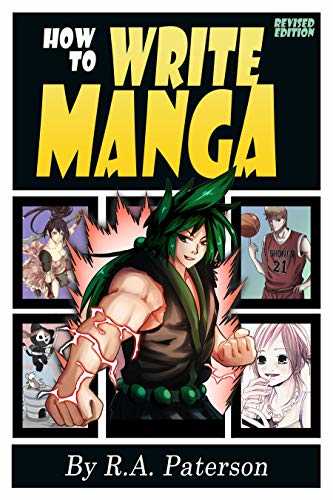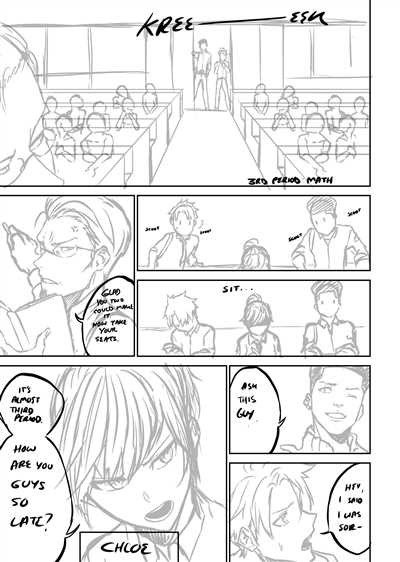
If you have a passion for drawing and a love for storytelling, then writing your own manga could be a dream come true. Manga, which originated in Japan, has become hugely popular worldwide, and many aspiring artists want to create their own manga series.
But how do you start? The first thing you need to do is download a manga creation software, like CorelDRAW, which will help you create the visual layouts and sequences for your manga. Once you have the software, it’s time to focus on the details.
Like any form of storytelling, a good manga needs a strong core. You need to have a clear idea of the story you want to tell, the characters involved, and the overall theme of your manga. This will be the backbone of your manga, so take your time developing it.
Next, you need to create a layout for your manga. Manga is read from right to left, so keep that in mind when laying out your pages. Experiment with different panel sizes and arrangement to find a layout that works for you. It’s important to keep the layout minimalistic and easy to follow, so your readers can focus on the story.
Now, it’s time to start drawing. Start with a rough pencil sketch to establish the composition and basic details of each panel. Then, go in with your pen or ink and start adding in the details. Pay attention to things like facial expressions, body language, and background elements to give your manga depth and visual interest. Don’t be afraid to experiment with different drawing styles to find your own unique voice.
When creating characters, it’s important to not copy from others. While it’s okay to take inspiration from your favorite manga artists, you need to develop your own style and characters that are unique to you. This will help your manga stand out and make it more memorable.
As you draw, remember to practice regularly. The more you practice, the better your drawing skills will become. Study anatomy, perspective, and other fundamental drawing concepts to improve your skills. Many professional manga artists also recommend studying from real-life references to make your drawings more realistic and accurate.
Finally, don’t forget to pay attention to the overall image of your manga. The cover of your manga is the first thing that people will see, so it needs to be eye-catching and representative of the story inside. Take your time to design a cover that will draw readers in and make them want to pick up your manga.
Writing your own manga takes time and dedication, but with practice and determination, you can create a manga that is unique and captivating. So, start now and let your creativity flow!
How to Write Your Own Manga

Writing your own manga can be a fun and rewarding experience. Whether you’re an aspiring artist or just a fan of the genre, creating your own manga allows you to express your creativity and tell the stories that you love. Here are some tips to help you get started on your manga-writing journey.
1. Do Your Research
Before you start writing your manga, it’s important to do your research. Read and study your favorite manga to get a sense of how they are structured and what makes them successful. Take note of the details that make each manga unique, such as the art style, the pacing, and the characters. By understanding what you like about other manga, you can incorporate those elements into your own work.
2. Practice Drawing
Manga is a visual medium, so it’s important to practice your drawing skills. Focus on drawing different characters and experimenting with different styles. Pay attention to the details and the expressions on the characters’ faces. The more you practice, the better your drawings will become, and the more confident you will feel about your own manga.
3. Start with the Details
When writing your manga, it’s important to start with the details. Focus on the specific scenes and dialogue that you want to include in your story. Think about the sequence of events and how they will unfold on the page. By getting the details down first, you can create a solid foundation for your manga.
4. Experiment with Layout
Manga is known for its unique layout and panel arrangements. Don’t be afraid to experiment with different ways to arrange your panels and create interesting page layouts. Use your favorite manga as a reference and try to recreate their layouts in your own work. This will help you understand how to create dynamic and engaging pages.
5. Keep it Minimalistic
When writing your manga, it’s important to remember that less is more. Focus on the core details and only include what is necessary to tell your story. Avoid cluttering your pages with unnecessary details or dialogue. Keep your panels clean and easy to read, and let the images speak for themselves.
6. Get Feedback from Others
Once you have written a few chapters of your manga, it’s important to get feedback from others. Share your work with friends, family, or fellow manga enthusiasts and ask for their honest opinions. Listen to their feedback and use it to improve your work. This will help you grow as a writer and artist.
7. Copy from the Masters
If you’re struggling to find your own style, don’t be afraid to copy from the masters. Download some manga pages or art from your favorite artists and try to recreate their style. This will help you understand the techniques and details that make their art so great. Over time, you will develop your own unique style.
Writing your own manga is a journey that requires practice, patience, and a lot of creativity. By following these tips and staying true to your own voice, you can create a manga that you are proud of. So get started now and let your imagination run wild!
In practice: A first sequence
When it comes to writing a manga, artists often like to experiment and create their own unique style. However, as a beginner, it’s important to start with a minimalistic approach and focus on the core elements of your story.
One tip for getting started is to download a page layout reference from others who have already mastered the art of manga. This will give you a specific template to work with, so you don’t need to worry about the layout and can instead focus on your own drawing.
In your first sequence, you can copy the general layout and page references from your favorite manga artists. However, it is important to not copy their exact images and details. Instead, use these references as a guide to create your own unique story.
Now, let’s talk about creating the sequence itself. Start with a simple script or outline for your scene, noting the specific details you want to include. This will help you stay organized and focused as you begin to draw.
When it comes to drawing the actual sequence, start with a rough sketch to establish the composition and overall flow. This doesn’t need to be perfect, as it’s just a starting point for your artwork.
Next, add in the specific details, such as facial expressions, body language, and background elements. This will bring your characters and scenes to life and create a more immersive experience for your readers.
Remember, practice makes perfect. Keep experimenting and refining your drawing skills, and don’t be afraid to try new techniques. With time and dedication, you will find your own unique style and be able to write your very own manga!
Do Not Copy Drawing from Others
In the process of learning how to write manga, it can be tempting to download or copy drawings from other artists. However, it is important to resist this temptation and instead focus on creating your own original artwork.
Copying drawings from others not only infringes on the copyrights of those artists, but it also hinders your own artistic growth. Instead, use references as a way to study different techniques and styles, and then incorporate those elements into your own unique art style.
When creating manga, the layout and page sequence are crucial. Take the time to plan out your pages and experiment with different compositions. You can start with a minimalistic layout and gradually add more details as you become more comfortable with the process.
Remember that manga is not just about the drawing; it is also about telling a story. Focus on developing compelling characters and engaging storylines that will captivate your readers.
If you find it challenging to create original drawings, practice drawing your favorite manga characters in different poses and situations. This will help you understand the anatomy and proportions of manga-style characters and develop your own unique drawing style.
Getting the details right is essential in manga. Pay attention to the specific details that make each character and scene distinctive. This can include the hairstyle, clothing, facial expressions, and background elements.
Instead of copying specific drawings, try to capture the essence and style of your favorite manga artists. Study their work and analyze their techniques, but do not copy their drawings directly. By doing so, you will develop your own artistic voice and style.
Remember that practice makes perfect. The more you practice drawing and creating your own manga, the better you will become. Do not be discouraged by initial failures or mistakes; they are part of the learning process.
To create your own manga, you will need more than just drawing skills. Familiarize yourself with the storytelling techniques used in manga, such as paneling, speech bubbles, and pacing. These skills will help bring your manga to life.
In conclusion, while it may be tempting to copy drawings from others, it is crucial to create your own original artwork. Use references and study the techniques of other artists, but always strive to develop your own style and voice. Focus on storytelling and practice diligently to improve your manga skills. By doing so, you will be able to create unique and captivating manga that stands out from the rest.
Experiment with Manga Page Layout
When it comes to creating your own manga, one of the most important aspects is the layout of the pages. The layout is the specific arrangement of panels on a page, and it can greatly influence the flow and storytelling of your manga. If you’d like to experiment with different page layouts, here are some tips to get you started:
1. Focus on Minimalistic Layouts
One popular technique used by many manga artists is to keep the page layout minimalistic. This means that they use a small number of panels with plenty of white space in between. By doing this, you can create a clean and focused image that allows the reader to easily follow the story.
2. Copy your Favorite Manga
One of the best ways to learn about different page layouts is by studying the work of others. Take a manga that you like and try to recreate it panel by panel to understand how the artist organized the page. Pay attention to the sequence of the panels and how they flow from one to another.
3. Use References
If you’re having trouble coming up with ideas for your own layouts, don’t be afraid to use references. Look at other manga, comic books, or even movies for inspiration. Analyze how they arrange their panels and try to incorporate similar techniques into your own work.
4. Experiment with Details
Don’t be afraid to experiment with different panel shapes and sizes. Use different angles, close-ups, and wide shots to add variety to your pages. This will help to make your manga more dynamic and engaging.
5. Practice with Drawing Software
If you’re not confident in your drawing skills or simply prefer digital art, try using software such as CorelDRAW or Clip Studio Paint. These tools allow you to easily create detailed manga pages and experiment with different layouts.
6. Download Layout Templates
Another way to experiment with page layouts is to download manga layout templates from the internet. These templates provide you with pre-made panel arrangements that you can use as a starting point for your own manga.
Remember, the core of your manga is the story you want to tell. The layout is just a tool to help you convey that story to your readers. So, don’t get too caught up in the details but rather focus on creating a layout that enhances your storytelling.
Need to Download CorelDRAW
If you want to create your own manga, one essential tool you will need is a good drawing software. While there are many options available, CorelDRAW is a popular choice among manga artists. With CorelDRAW, you can easily sketch, ink, and color your manga pages with precision and ease.
Downloading CorelDRAW is a straightforward process. You can visit the official Corel website or trusted software platforms to find and download the latest version of CorelDRAW. Once you have downloaded and installed the software on your computer, you are ready to start creating your manga!
One of the first things you should do when starting a new manga project is to practice your drawing skills. Manga art has a distinct style and technique, so it’s important to familiarize yourself with the basics. You can look for manga drawing tutorials online or follow step-by-step guides to improve your drawing ability.
When it comes to creating a manga, layout and composition are key. Plan out the sequence of panels on each page, considering the flow of the story and the overall aesthetics. To get the right balance, it’s essential to experiment with different layouts and compositions until you find one that works for your story.
Once you have your layout in place, you can start adding details to your manga pages. Focus on the characters’ expressions, backgrounds, and action scenes. Remember, manga is a visual medium, so the details play a significant role in conveying emotions and telling the story.
While creating your manga, it’s important to have references. Study other manga artists’ work to get inspiration and learn from their techniques. Collect your favorite manga and use them as references when you get stuck or need ideas for specific scenes.
When it comes to the drawing process, it’s up to you whether you prefer a minimalistic or highly detailed style. Manga can be both, and it’s all about finding your own unique style. Some artists prefer to focus only on the essential elements, while others enjoy creating intricate artwork with lots of details.
Practice is crucial in becoming a skilled manga artist. The more you practice, the better you will become at creating engaging stories and captivating artwork. Don’t be afraid to make mistakes or take risks. Experiment with different techniques and push yourself to improve with each new project.
Now that you have CorelDRAW downloaded and a basic understanding of how to create manga, it’s time to start bringing your ideas to life. Remember, creating manga is a journey, and it’s okay to take things step by step. With practice and dedication, you can write and draw your own manga, inspiring others with your unique storytelling and artistic abilities.
Now You Can Focus on Specific Details

After getting the core layout of your manga sequence on paper, you can now focus on adding the specific details to bring your story to life. This is where your drawing skills will come into play as you create the characters, backgrounds, and other elements that will populate your manga pages.
If you’re not confident in your drawing abilities, don’t worry! Many manga artists like to experiment with different drawing styles, and there are plenty of resources available to help you improve. You can practice drawing your favorite manga characters, use references from other manga or anime, or even download images to study and copy. Practice is key, so don’t be discouraged if your first attempts don’t look exactly like you imagined.
When adding details to your manga pages, pay attention to the small things that will make your artwork stand out. Notice how professional manga artists use lines, shading, and textures to bring depth and dimension to their drawings. This level of detail not only enhances the visual experience but also helps to convey emotions and set the mood of the story.
One useful method for adding details to your manga pages is to use software like CorelDRAW or other graphic design tools. These programs allow you to create and manipulate digital images, giving you more flexibility and control over the final result. You can experiment with different brushes, colors, and effects without worrying about making mistakes on your original paper layout.
Remember, manga is about storytelling, and the details you add to your artwork should support the narrative. Consider how each detail contributes to the overall story and whether it helps to convey the intended message. Don’t get too caught up in creating detailed artwork for every single panel; sometimes, simple and minimalistic details can have a stronger impact.
Now that you have the basic tips for adding details to your manga, it’s time to unleash your creativity and bring your story to life. Focus on specific details that will make your manga unique and captivating. With practice and perseverance, you can create a manga that stands out and resonates with others.









